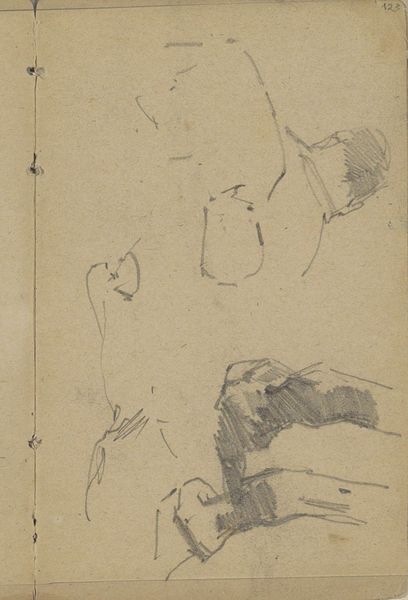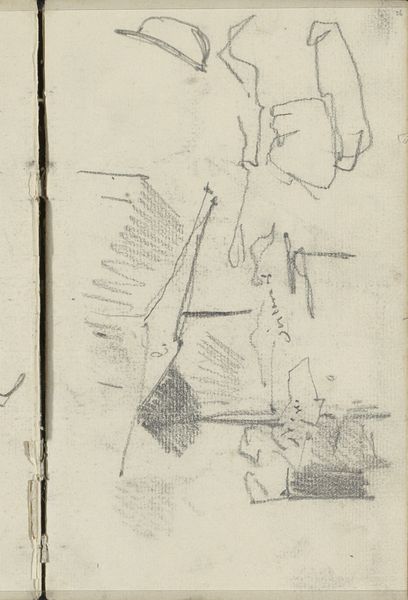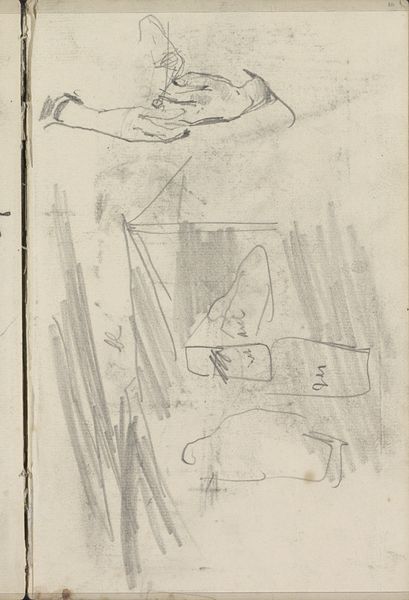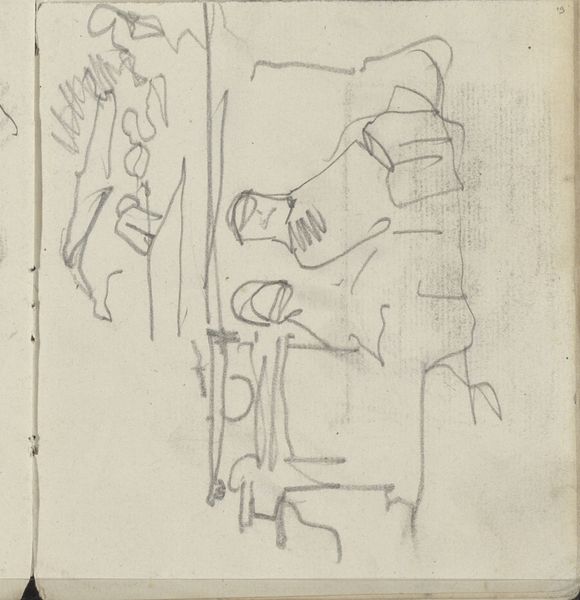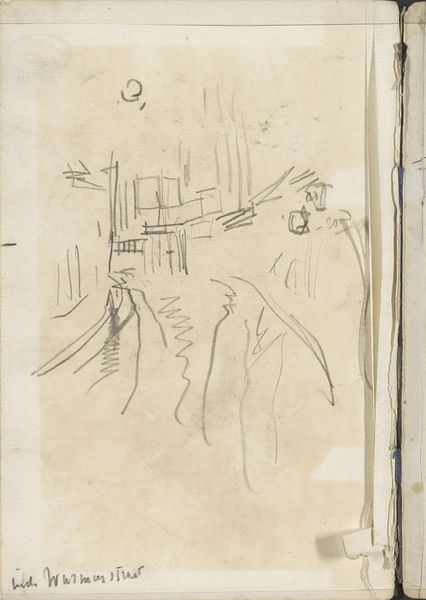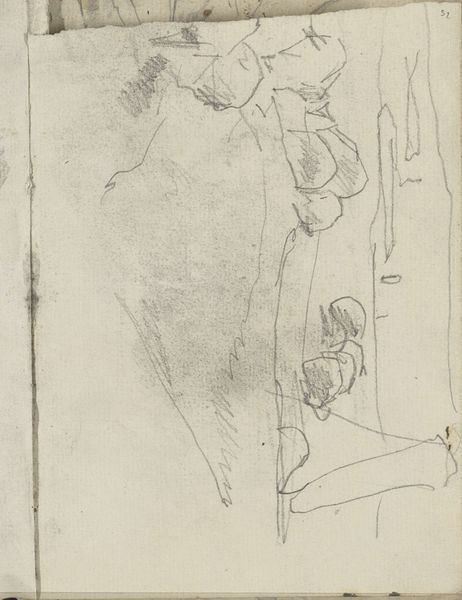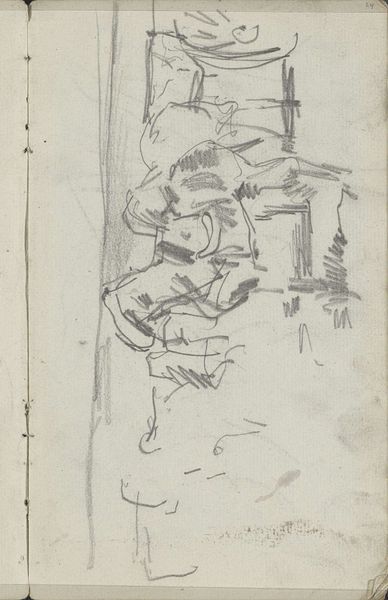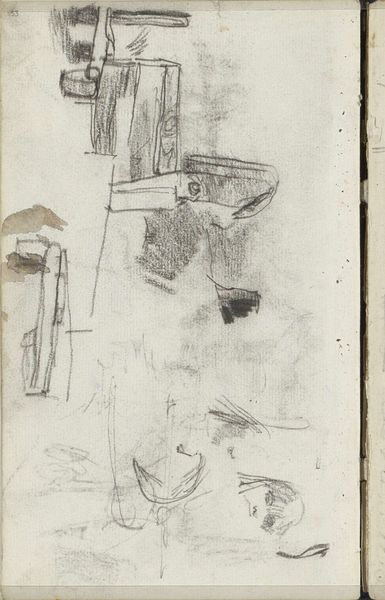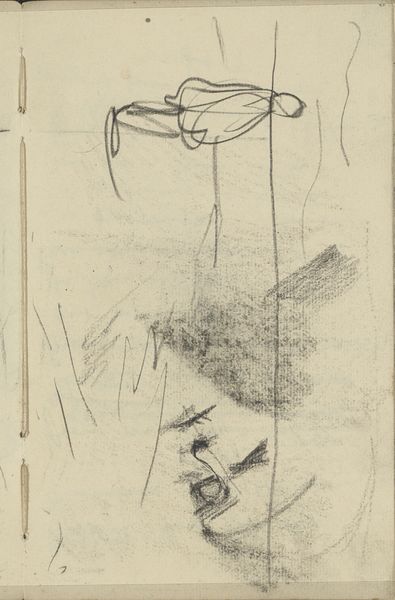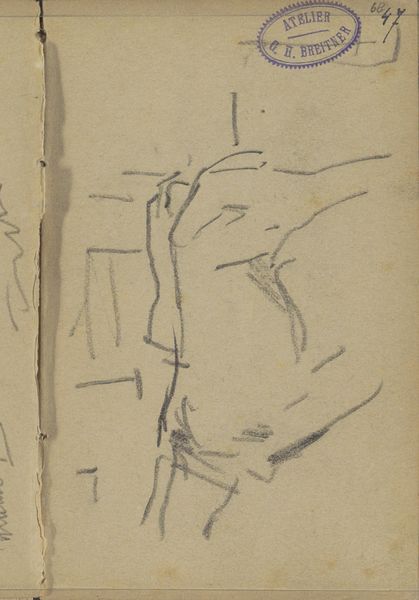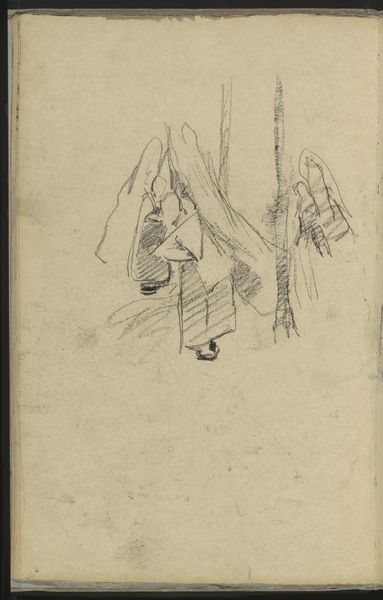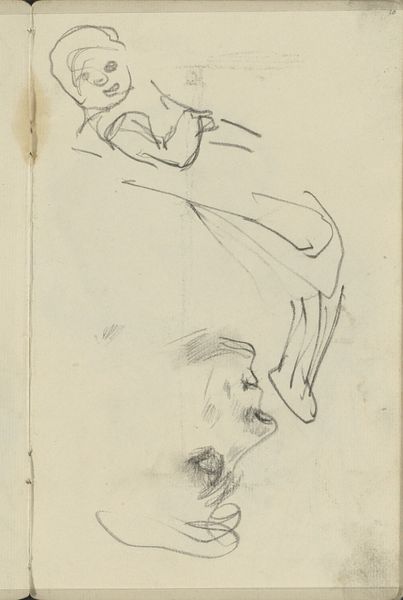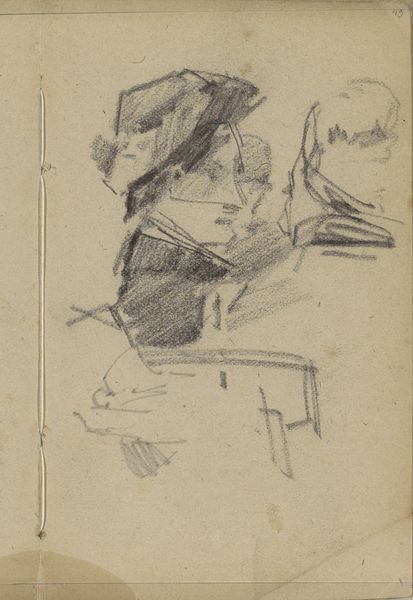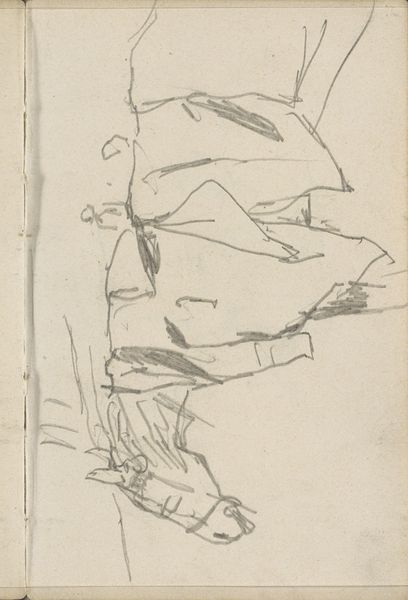
drawing, pencil, graphite
#
portrait
#
drawing
#
toned paper
#
light pencil work
#
quirky sketch
#
dutch-golden-age
#
impressionism
#
sketch book
#
figuration
#
personal sketchbook
#
idea generation sketch
#
sketchwork
#
pencil
#
graphite
#
sketchbook drawing
#
storyboard and sketchbook work
#
sketchbook art
#
realism
Copyright: Rijks Museum: Open Domain
Editor: This is "Man met een werktuig" or "Man with a Tool" by George Hendrik Breitner, around 1882, done in pencil. It’s a sketch, seemingly from a sketchbook, and has a very intimate, almost voyeuristic feel to it. What jumps out to you when you see this piece? Curator: What I find striking is how Breitner, even in this quick sketch, hints at the dignity and labor often overlooked within the working class. Consider the date, 1882. What socio-political context was forming in Amsterdam at this time that Breitner might have been engaging with? Editor: I'm not entirely sure. A rise in socialist movements, maybe? More awareness of the struggles of the working class? Curator: Precisely! Breitner positioned himself as a "people's painter." Does this sketch, despite its lack of finish, reflect that intention? Is there a commentary embedded in even these gestural lines about the societal role of manual laborers? Editor: It’s interesting, because the sketchiness almost makes him anonymous. It's less about a specific man and more about the concept of a worker. But that could also dehumanize him. Is it possible to truly capture someone's essence when focusing on broader social commentary? Curator: That's the tension, isn't it? How do we, as artists and viewers, navigate the space between individual experience and systemic oppression? This sketch becomes a site of negotiation – an attempt, perhaps flawed, to give visibility without erasing individuality. Do you think Breitner succeeds in this delicate balancing act? Editor: It's hard to say definitively, but the question itself is really valuable to consider when viewing art like this. I'm now considering the ethics of representation in a new light. Curator: And that, ultimately, is the power of art: to provoke critical self-reflection.
Comments
No comments
Be the first to comment and join the conversation on the ultimate creative platform.
